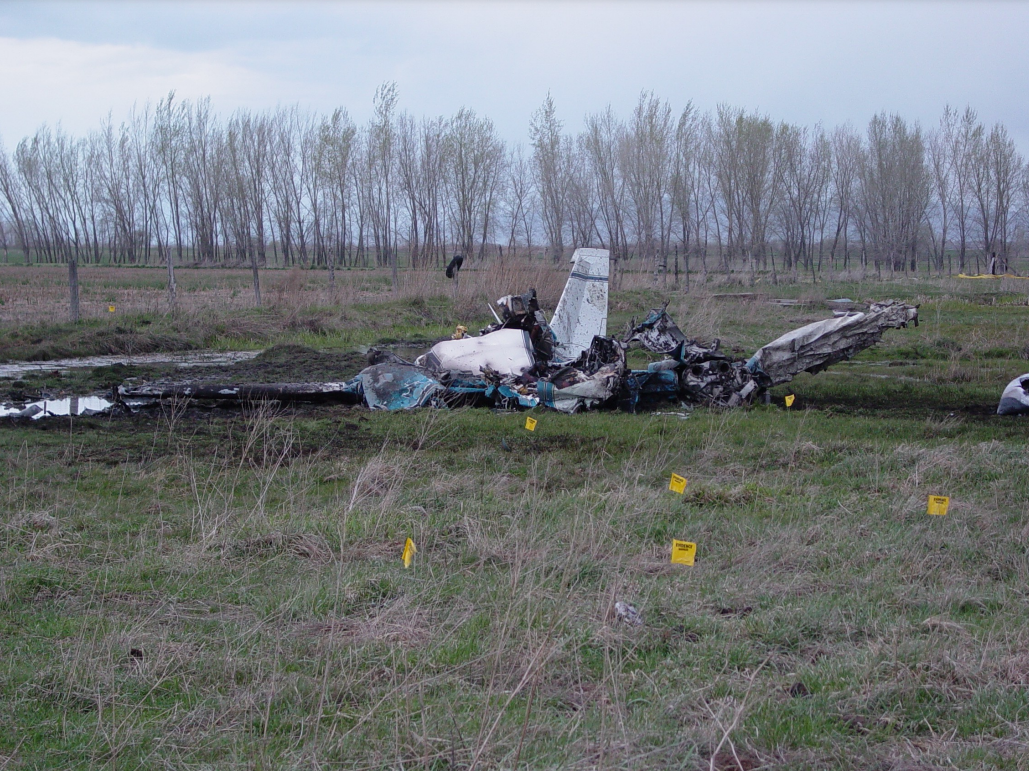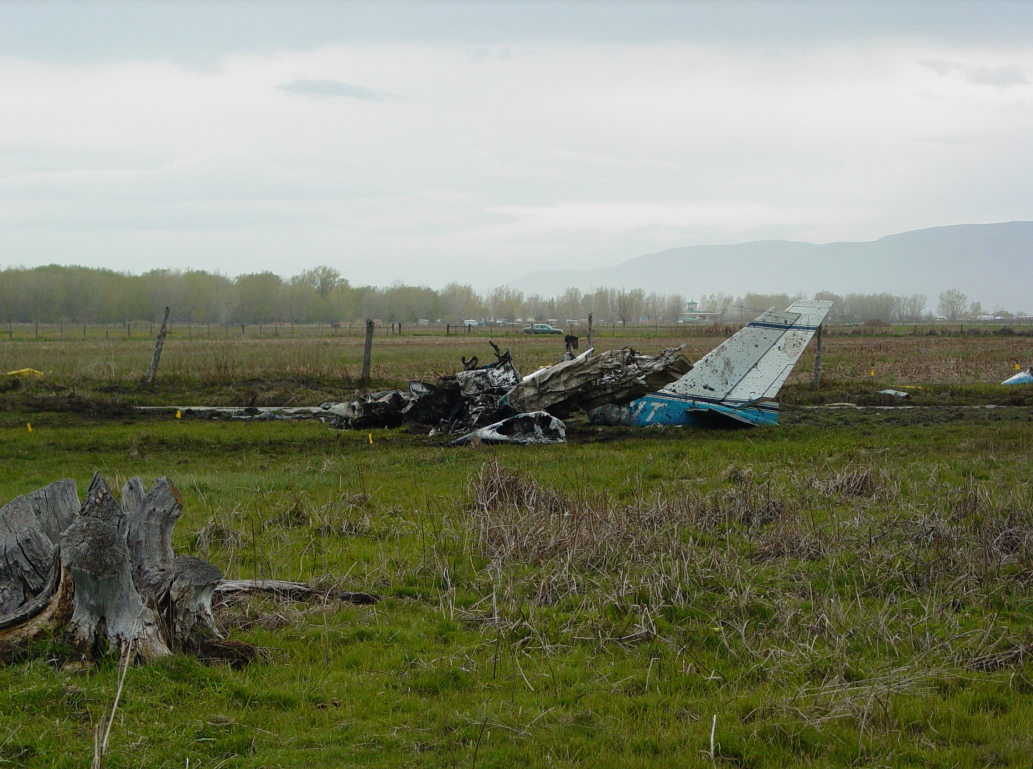
ASN Wikibase Occurrence # 45237
This information is added by users of ASN. Neither ASN nor the Flight Safety Foundation are responsible for the completeness or correctness of this information.
If you feel this information is incomplete or incorrect, you can submit corrected information.
| Date: | Thursday 17 April 2003 |
| Time: | 17:39 |
| Type: |  Cessna 310D |
| Owner/operator: | Advantage Aviation Inc |
| Registration: | N6861T |
| MSN: | 39161 |
| Year of manufacture: | 1960 |
| Total airframe hrs: | 4256 hours |
| Engine model: | Continental IO-470-D |
| Fatalities: | Fatalities: 3 / Occupants: 3 |
| Aircraft damage: | Destroyed |
| Category: | Accident |
| Location: | near Provo Municipal Airport (PVU/KPVU), Provo, UT -
 United States of America United States of America
|
| Phase: | Approach |
| Nature: | Training |
| Departure airport: | Provo Airport, UT (PVU/KPVU) |
| Provo Airport, UT (PVU/KPVU) | |
| Investigating agency: | NTSB |
| Confidence Rating: |
On April 17, 2003, at 1739 mountain daylight time, a Cessna 310D, N6861T, registered to Smith & Barlow Enterprises, Inc., and operated by Advantage Aviation, Inc., both of Provo, Utah, impacted terrain 1.07 miles north of the Provo Municipal Airport, Provo, Utah. Three commercially certificated flight instructors were fatally injured. Visual meteorological conditions prevailed, and no flight plan had been filed for the instructional flight being conducted under Title 14 CFR Part 91. The flight originated at Provo approximately 1600.
The airplane's main fuel tanks were full (100 gallons useable) when it departed on a 1.6 hour instructional flight. The auxiliary fuel tanks had been placarded inoperative. Visual inspection confirmed the tanks were half-full at the conclusion of the flight. The accident flight took off and was aloft for approximately 1.7 hours. It, too, was an instructional flight. According to a tape recording and transcript of radio communications, the instructor reported they would be entering a right downwind for runway one eight, flying a single engine pattern. Shortly thereafter, he called the pilot of an airplane that was in front on them and asked, "Can we get priority to the runway? We've got a difficulty." The consensus of 27 witnesses was that the airplane made a steep right turn from base leg to final approach, and then it descended vertically to the ground, exploded on impact, and burned. Measurements taken indicated the landing gear was retracted and the flaps were extended 5 degrees. It was noted that when the rudder was aligned with the vertical stabilizer, the rudder trim tab was fully deflected to the right. Measurement of the rudder actuator confirmed this observation (left rudder). The right aileron trim tab was deflected full up (aileron down, wing up). Measurement of the elevator trim tab actuator indicated the tab was 15 degrees down (elevator up). According to the Cessna Aircraft Company, this is about half of the total deflection range. Disassembly of the engines revealed no anomalies. Components and accessories were bench tested and found to operate satisfactorily within service limits. Disassembly of the propellers revealed neither propeller was feathered. The left propeller was at the low pitch stop, and the right propeller was just past this position (low power). According to the airplane's Climb Data and Cruise Performance Charts, each engine will consume between 14.9 and 26.6 gallons per hour (gph) at 7,500 feet msl and under standard atmospheric conditions, depending on power setting (manifold pressure and rpm). During climb between 5,000 and 7,500 feet msl, each engine will consume between 6.2 and 7.5 gph (depending on power setting). Airworthiness Directive 69-15-09, entitled "To Prevent Fuel Starvation During High Angle Descent," was issued to mandate compliance with Cessna Service Letter ME69-19, entitled "Minimum Fuel and Power Setting Placards." The service letter stated (in part), "Operation with less than five gallons of fuel in each main tank is prohibited. Useable fuel in each tank is 45 gallons. Maintain power within the green arc during descent."
Probable Cause: Failure of the student to maintain aircraft control. Contributing factors were the instructor's inattention to the fuel supply, fuel exhaustion, an inadvertent stall/spin during the turn from base leg to final approach. and the instructor's inadequate supervision of the flight.
Accident investigation:
 |
|
Sources:
NTSB: https://www.ntsb.gov/_layouts/ntsb.aviation/brief.aspx?ev_id=20030428X00586&key=1
Location
Images:



Photos: NTSB
Revision history:
| Date/time | Contributor | Updates |
|---|---|---|
| 28-Oct-2008 00:45 | ASN archive | Added |
| 21-Dec-2016 19:24 | ASN Update Bot | Updated [Time, Damage, Category, Investigating agency] |
| 08-Dec-2017 18:32 | ASN Update Bot | Updated [Operator, Source, Narrative] |
Corrections or additions? ... Edit this accident description
The Aviation Safety Network is an exclusive service provided by:


 ©2024 Flight Safety Foundation
©2024 Flight Safety Foundation